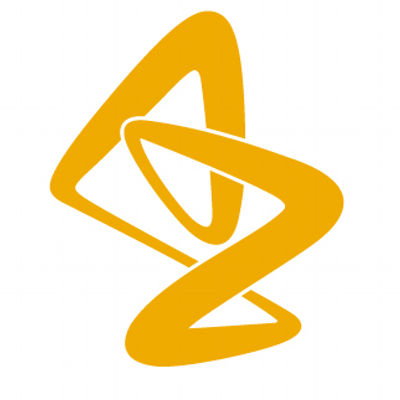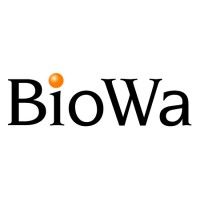Request Demo
Last update 08 May 2025
Severe chronic obstructive pulmonary disease
Last update 08 May 2025
Basic Info
Synonyms Severe chronic obstructive pulmonary disease, Severe chronic obstructive pulmonary disease (diagnosis), Severe chronic obstructive pulmonary disease (disorder) + [1] |
Introduction- |
Related
8
Drugs associated with Severe chronic obstructive pulmonary diseaseTarget |
Mechanism TSLP inhibitors |
Active Org. |
Originator Org. |
Inactive Indication |
Drug Highest PhaseApproved |
First Approval Ctry. / Loc. United States |
First Approval Date17 Dec 2021 |
Mechanism GR agonists [+2] |
Active Org. |
Originator Org. |
Active Indication |
Inactive Indication |
Drug Highest PhaseApproved |
First Approval Ctry. / Loc. Japan |
First Approval Date18 Jun 2019 |
Target |
Mechanism IL-5Rα inhibitors |
Active Org. |
Originator Org. |
Active Indication |
Inactive Indication |
Drug Highest PhaseApproved |
First Approval Ctry. / Loc. United States |
First Approval Date14 Nov 2017 |
45
Clinical Trials associated with Severe chronic obstructive pulmonary diseaseNCT06247397
Effect of HIgh-flow Therapy in Long-term Oxygen Therapy (HILOT): A Multicenter, Registry-based, Randomized Clinical Trial
This is a registry-based, randomized, controlled clinical trial of the effect of added high-flow oxygen therapy (using the device Lumis HFT) during one year in people with long-term oxygen therapy (LTOT) for chronic obstructive pulmonary disease (COPD) or interstitial lung disease (ILD).
Start Date10 Jun 2024 |
Sponsor / Collaborator |
NCT06252805
Severe Prospective Observational Study of COPD in Catalonia
Multicenter observational study to characterize and follow-up a cohort of patients with severe chronic obstructive pulmonary disease (COPD) in Catalonia
Start Date10 Mar 2024 |
Sponsor / Collaborator- |
NCT06229509
Study of Cytokine Response During Exercise Dyspnea in Patients With Chronic Obstructive Pulmonary Disease (COPD). Effect of Body Composition
Dyspnea, more commonly known as breathlessness, is a symptom found in the majority of patients with chronic obstructive pulmonary disease (COPD), with a major impact on quality of life and mortality.
COPD is a chronic inflammatory disease of the bronchi, affecting 8% of the French population (more than 3 million people). By 2030, it will be the third leading cause of death worldwide. Effective management of dyspnea in these patients is a priority.
In patients with severe COPD, physical exertion increases the workload of breathing, leading to dyspnea. At the same time, the respiratory muscles and fatty cells release cytokines, myokines and adipokines - a group of proteins involved in the inflammatory response. In addition, 15% of COPD patients suffer from sarcopenia (loss of muscle mass and strength) which increases respiratory effort and dyspnea.
Our research project aims to study the effect of dyspnea relief in COPD patients on cytokine, myokine and adipokine levels, taking into account the presence of sarcopenia. Indeed, it is possible to alleviate the workload of the respiratory muscles during exercise by means of respiratory assistance.
The ultimate goal is a better understanding of dyspnea mechanisms, to enable the development of cytokine-targeted therapies and improve quality of life and survival in these patients.
COPD is a chronic inflammatory disease of the bronchi, affecting 8% of the French population (more than 3 million people). By 2030, it will be the third leading cause of death worldwide. Effective management of dyspnea in these patients is a priority.
In patients with severe COPD, physical exertion increases the workload of breathing, leading to dyspnea. At the same time, the respiratory muscles and fatty cells release cytokines, myokines and adipokines - a group of proteins involved in the inflammatory response. In addition, 15% of COPD patients suffer from sarcopenia (loss of muscle mass and strength) which increases respiratory effort and dyspnea.
Our research project aims to study the effect of dyspnea relief in COPD patients on cytokine, myokine and adipokine levels, taking into account the presence of sarcopenia. Indeed, it is possible to alleviate the workload of the respiratory muscles during exercise by means of respiratory assistance.
The ultimate goal is a better understanding of dyspnea mechanisms, to enable the development of cytokine-targeted therapies and improve quality of life and survival in these patients.
Start Date01 Feb 2024 |
Sponsor / Collaborator |
100 Clinical Results associated with Severe chronic obstructive pulmonary disease
Login to view more data
100 Translational Medicine associated with Severe chronic obstructive pulmonary disease
Login to view more data
0 Patents (Medical) associated with Severe chronic obstructive pulmonary disease
Login to view more data
21
Literatures (Medical) associated with Severe chronic obstructive pulmonary disease01 Sep 2022·Vaccine
A detailed analysis of possible efficacy signals of NTHi-Mcat vaccine against severe COPD exacerbations in a previously reported randomised phase 2b trial
Article
Author: Rondini, Simona ; Pascual-Guardia, Sergi ; Arora, Ashwani K ; Vera, Mercè Pérez ; Moraschini, Luca ; Keller, Claus ; Lambert, Christophe ; Lombardi, Stefano ; Mayers, Irvin ; Casula, Daniela ; Ulloa-Montoya, Fernando ; Chinsky, Kenneth ; Tian, Sun
01 Sep 2022·Applied Health Economics and Health Policy
Economic Evaluation of Triple Therapy with Budesonide/Glycopyrrolate/Formoterol Fumarate for the Treatment of Moderate to Very Severe Chronic Obstructive Pulmonary Disease in China Using a Semi-Markov Model
Article
Author: Wu, Jing ; He, Xiaoning ; Liu, Jia
01 Aug 2020·Journal of CardiologyQ3 · MEDICINE
Echocardiographic predictors of stress induced right ventricular diastolic dysfunction in non-severe chronic obstructive pulmonary disease
Q3 · MEDICINE
Article
Author: Cherneva, Zheyna Vlaeva ; Denchev, Stefan Veselinov ; Cherneva, Radostina Vlaeva
Analysis
Perform a panoramic analysis of this field.
login
or

AI Agents Built for Biopharma Breakthroughs
Accelerate discovery. Empower decisions. Transform outcomes.
Get started for free today!
Accelerate Strategic R&D decision making with Synapse, PatSnap’s AI-powered Connected Innovation Intelligence Platform Built for Life Sciences Professionals.
Start your data trial now!
Synapse data is also accessible to external entities via APIs or data packages. Empower better decisions with the latest in pharmaceutical intelligence.
Bio
Bio Sequences Search & Analysis
Sign up for free
Chemical
Chemical Structures Search & Analysis
Sign up for free



